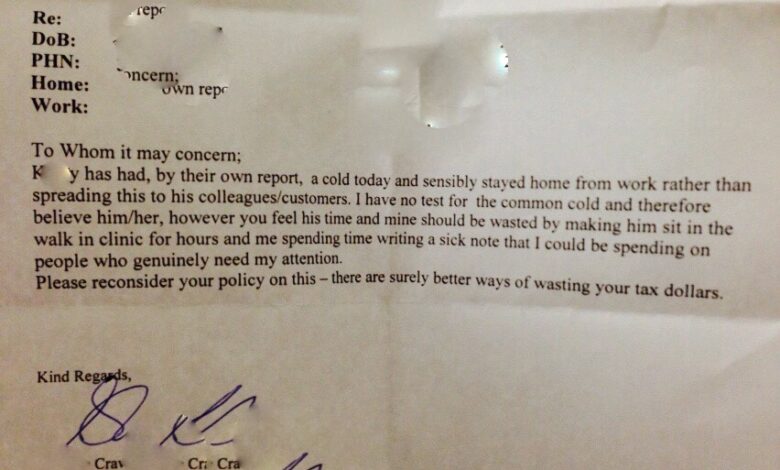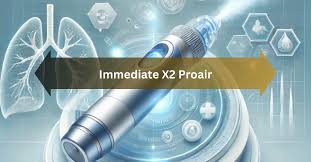Real Doctors Note for Work: Your Ultimate Guide to Legitimacy and Usage

real doctors note for work In today’s fast-paced work environment, health concerns can sometimes keep employees from attending work. Whether it’s a sudden illness, an accident, or a medical condition, having the ability to provide a doctor’s note for work becomes necessary. However, not all doctor’s notes are created equal. For a note to be valid, it needs to come from a legitimate medical professional and meet specific requirements set by your employer. This article will cover everything you need to know about real doctors note for work, from understanding their importance to how to use them correctly.
Understanding Real Doctors Notes
What is a Real Doctor’s Note?
A doctor’s note, also known as a medical certificate or sick note, is a written document provided by a licensed medical professional, confirming that an employee has been ill or unable to work for a period of time. A real doctors note for work should include essential information, such as the date of the visit, diagnosis or reason for absence (without violating patient confidentiality), the recommended duration of absence, and the real doctors note for work signature or stamp.
Unlike fake doctor’s notes, which are often fabricated to avoid work, a real doctors note for work is a legitimate form of documentation that holds up to scrutiny by employers. Fake notes might lack the necessary medical details or come from unreliable sources, which could lead to serious consequences, including dismissal or legal trouble. A real doctors note for work not only helps employees maintain trust with their employer but also ensures that the employee receives proper medical care when necessary.
Why Are Doctors Notes Required for Work?
Doctor’s notes are often required by employers to verify that an employee’s absence from work is due to a legitimate medical condition. Employers need to ensure that time off from work is justified, especially when it affects business operations. This documentation serves as proof that the employee’s condition is serious enough to warrant time away from their job.
From a legal standpoint, real doctors note for work protect both the employee and the employer. For employees, it prevents misunderstandings with the employer and helps maintain job security. It also safeguards their right to medical leave under labor laws, like the Family and Medical Leave Act (FMLA) in the U.S. For employers, it ensures that employees are not misusing sick leave policies, while also accommodating the employee’s health needs. It also provides a clear record that can be important in case of disputes over sick leave.
How to Obtain a Real Doctor’s Note
Scheduling an Appointment with a Doctor
The first step in obtaining a legitimate doctor’s note is to schedule an appointment with a licensed physician. Whether it’s a general practitioner, specialist, or a visit to urgent care, the key is to ensure that the doctor is fully qualified to assess your condition. It’s important to be honest with your doctor about your symptoms and needs, as the note will be based on the information you provide.
In some cases, the real doctors note for work may perform an examination, diagnostic tests, or ask questions related to your medical history to determine whether your symptoms are serious enough to warrant time off from work. If you’re genuinely ill or injured, the doctor will issue a note outlining your diagnosis and the recommended amount of time you should refrain from work. Remember, the doctor’s note will be only as credible as the assessment that the physician performs, so it’s important to seek medical advice even for minor illnesses.
Telemedicine and Online Services
In recent years, telemedicine has become a popular option for obtaining a doctor’s note without needing to visit a physical clinic. Virtual consultations with licensed real doctors note for work are now more accessible than ever, allowing patients to receive medical advice and a doctor’s note from the comfort of their home. Online services like Teladoc, MDLive, and HealthTap provide a platform to connect with healthcare professionals remotely.
These virtual visits are often just as legitimate as in-person consultations, as long as the doctor is licensed in your state or country and follows standard medical practices. Telemedicine can be particularly convenient for those who are unable to leave their homes due to illness, mobility issues, or geographical limitations. The real doctors note for work will typically ask about your symptoms, assess your situation, and issue a doctor’s note if they believe it’s necessary.
Key Details to Include in a Doctor’s Note
A real doctors note for work should include certain essential elements to be valid. These include:
- Doctor’s Information: Full name, medical credentials, office address, and contact number.
- Patient’s Information: Your name, date of birth, and sometimes your medical history.
- Date of Visit: The date when the consultation took place.
- Diagnosis or Reason for Absence: A general description of the illness or condition. While specifics may not be required, the real doctors note for work should include relevant details that confirm the medical necessity of your absence.
- Recommended Time Off: The duration of time you are advised to refrain from work.
- Doctor’s Signature or Stamp: A signature ensures authenticity and that the note is issued by a licensed professional.
Make sure that all the details are accurate and that the note is signed and dated by the physician. This will prevent any suspicion or rejection of the note by your employer.
Legal and Ethical Considerations
Legitimacy of Doctor’s Notes
Using a fake doctor’s note can have serious legal consequences. Employers are entitled to verify the authenticity of a real doctors note for work, and any attempt to present fraudulent documentation can result in disciplinary action, including termination. Most employers will look for specific clues to determine whether a note is real, such as the doctor’s professional letterhead, valid contact information, and proper formatting.
In some jurisdictions, using a fake doctor’s note is not only a violation of company policy but may also constitute fraud, which is a criminal offense. It’s crucial to understand that a legitimate real doctors note for work is an official medical document and should be treated with the same seriousness as any other professional correspondence.
Employee Rights Regarding Medical Privacy
Employees are entitled to privacy regarding their medical conditions. Under laws like HIPAA (Health Insurance Portability and Accountability Act), employers are prohibited from accessing detailed medical records without the employee’s consent. A real doctors note for work typically only needs to provide basic information—like confirming the employee’s inability to work and the expected duration of absence—without going into the specifics of the diagnosis.
Employers are not allowed to ask employees for overly detailed medical information unless it’s directly related to job performance. This ensures that employees’ medical privacy is protected, while still allowing the employer to manage workforce absences appropriately.
Practical Tips for Using a Doctor’s Note at Work
Best Practices for Communicating with Your Employer
When you have a legitimate , the next step is communicating with your employer. It’s important to notify your boss or human resources department as soon as possible, especially if you know you’ll need to take extended leave. Some employers may require you to submit the real doctors note for work in advance, while others may ask for it after you return to work.
Make sure to keep the communication professional and clear. You should provide the note promptly and in the format your employer prefers, whether that’s through email, in-person, or via the company’s online portal. Be sure to include all the relevant details, including when you’ll return to work, so that your employer can make necessary adjustments.
Handling Employer Pushback
Sometimes, employers may question the legitimacy of your doctor’s note or require further verification. In this case, remain calm and cooperative. Understand that employers have the right to verify the authenticity of a real doctors note for work, and sometimes additional steps might be necessary. If your note is questioned, you may need to provide the contact information of the doctor who issued the note or give consent for your employer to reach out for further verification.
It’s also important to familiarize yourself with your company’s policies regarding sick leave. If you know that your employer requires a real doctors note for work absences over a certain duration, ensure that you provide it ahead of time. Transparency and honesty will help maintain trust between you and your employer.
Conclusion: real doctors note for work
Obtaining a real doctors note for work is an essential part of navigating workplace sick leave policies. A legitimate note ensures that your absence is recorded appropriately and protects both your rights and your employer’s interests. By following the proper steps—whether it’s scheduling an appointment or using telemedicine services—you can obtain a valid note that meets your employer’s expectations.
Always remember, honesty is key. Falsifying a doctor’s note can have significant legal and professional consequences, while following proper protocols allows you to maintain integrity in the workplace.




